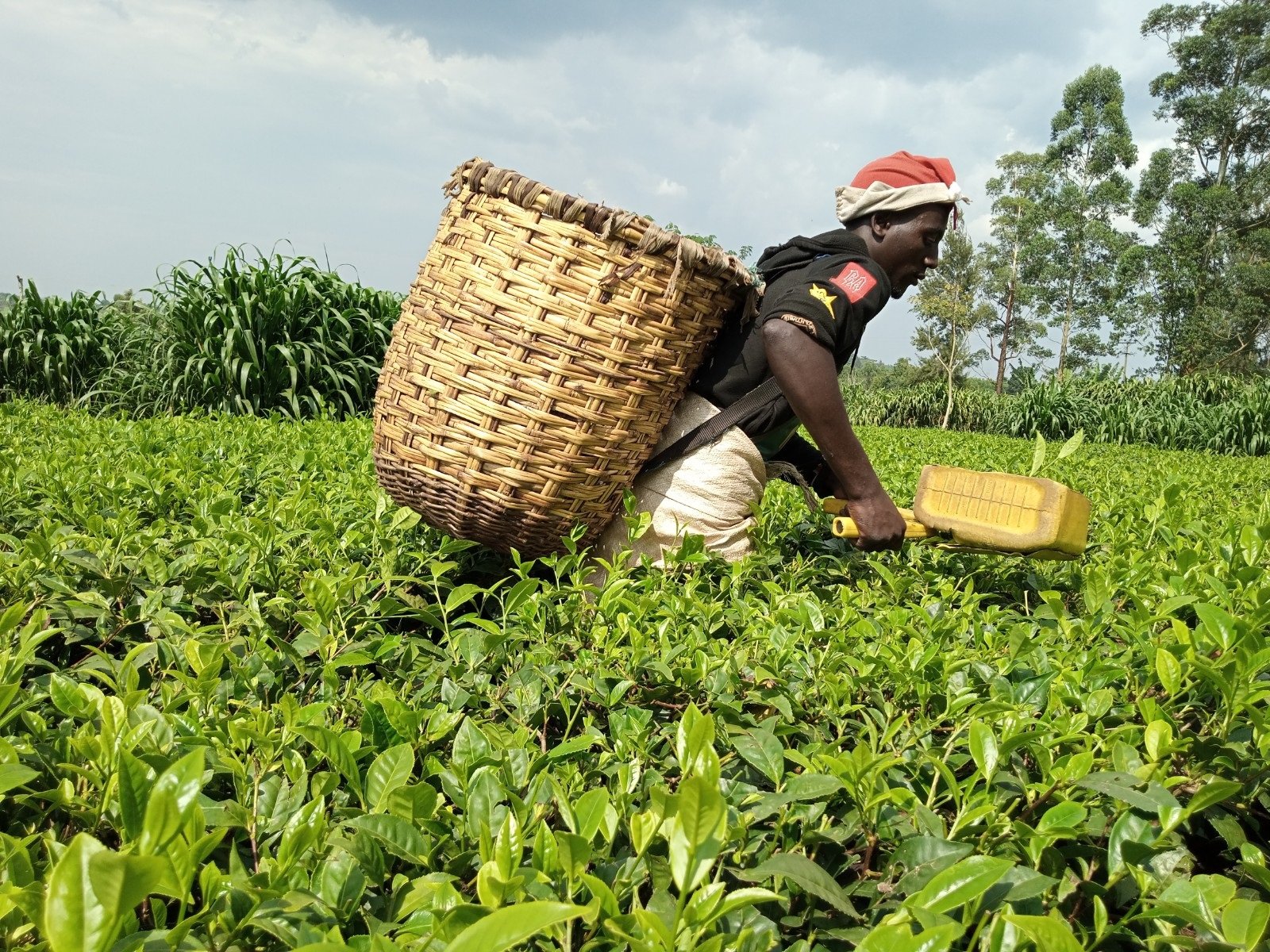Tea farmers seek Shs40b govt bailout for fertilisers

A man plucks green tea leaves from a garden in Kiko Town Council, Kabarole District, on May 4, 2024. PHOTO | ALEX ASHABA
What you need to know:
- The Tooro Sub-region leads in tea production, accounting for 39 percent, followed by Ankole at 29 percent, Kigezi at 12 percent, Buganda at 12 percent, and Bunyoro at 9 percent.
Farmers under the Uganda Tea Outgrowers Association (UTOA) have petitioned the government for a Shs40 billion bailout to revive the sector.
According to Mr Onesmus Matsiko, the chairperson of UTOA, many farmers have been forced to abandon or uproot their gardens due to the plummeting farm gate prices of green tea leaves, which have fallen to Shs150 per kilogramme.
At the beginning of this year, a kilogramme of tea was Shs200 down from Shs250 last October.
He said financial support would provide the much-needed resources for buying fertilisers for all tea farmers in the country, essential for the survival of the industry.
“The government needs to support tea farmers across the country. If we receive Shs40 billion, each farmer could buy fertilisers for one season to revive their gardens,” he said.
“Currently, most tea gardens are bushy, and the quality is poor. For farmers to re-engage in tea growing, they need fertilisers,” he said.
He warned that if the government fails to invest money in the sector to help farmers, many factories could close due to shortage of supply of tea.
He noted that about 40 percent of tea farmers have abandoned their gardens, while others have uprooted their gardens and may not be able to rejoin the tea industry.
“The government is to blame for the situation farmers are facing. Why allow people to join the sector without regulation? Factory owners also need to be blamed for buying poor-quality green tea leaves from farmers,” he said.
The Tooro Sub-region leads in tea production, accounting for 39 percent, followed by Ankole at 29 percent, Kigezi at 12 percent, Buganda at 12 percent, and Bunyoro at 9 percent.
Small-scale farmers, who supply fresh tea leaves to processing plants and contribute about 46 percent of the total production, dominate tea production.
The number of tea factories in the country increased from 28 in 2015 to 33 in 2022, with five owned by smallholder farmers. Between 2008 and 2022, the government supported tea farmers with 563 million tea seedlings.
The farmer’s request for government funding remains uncertain. During the International Labour Day celebrations in Fort Portal City, President Museveni stated that tea is not a high-value crop among the enterprises he selected for small-scale farmers. Instead, he categorised it as part of large-scale agriculture meant for extensive farming.
“In my four-acre model and seven activities, I have never talked about tea. In addition, you are saying that tea has problems, I know them and I have studied them. That is why I never included tea in my documents of recommendation. For me whatever I recommend for my people in writing I don’t just talk, I recommended seven enterprises for the poor people, coffee, fruits, dairy, and food crops for the home, poultry for eggs, piggery, and fish farming. This is what I recommended in writing,” he said.
Close to 80,000 farming households are involved in tea production across the country, supporting over 150,000 skilled and unskilled workers. Approximately one million people directly derive their livelihood from tea growing, according to National Agricultural Advisory Services (NAADS) on its website.
Since May, after President Museveni’s statement on the tea sector, some out-growers, particularly from the Tooro and Kigezi sub-regions, have started uprooting their gardens to plant other crop varieties, while others have abandoned their gardens altogether.
The Tooro sub-region, the leading tea producer, has 13 tea factories, some of which are owned by smallholder farmers who supply green tea leaves, while companies own other factories.
However, due to the low prices of green tea leaves, many growers have let their gardens become bushy, with some using the land for grazing cows in the meantime, while others have introduced other crops.
Ms Jackline Karungi, a farmer from the Kyenjojo District, said her family had about 50 acres of tea. Since January when the price of green tea leaves dropped to Shs150, the family, however, decided to abandon the gardens until the prices stabilise.
“We realised we were making losses. We were investing much in our tea gardens compared to the returns. How can you sell a kilogramme of green tea leaves at Shs150 when a tea plucker takes Shs 100? Are you in business? We decided to abandon the gardens until the government sets up a stable price,” she said.
She noted that tea was originally a source of livelihood for most people in the Tooro sub-region, but due to price fluctuations, several farmers are abandoning the crop.
Mr James Abenaitwe, a tea plucker, said since April, when the owner of the garden he worked at abandoned it, he was told to go home until he is called back to work and for the last five years, plucking leaves had been a source of income to support his family.
“My life, together with that of my colleagues, has changed since we stopped working. Each kilogramme of green tea leaves earned me Shs100, and I would pluck about 200 kilogrammes of leaves daily. Now, I am at home looking for another business to do. The gardens are bushy, and the owners have no money to maintain them,” he said.




